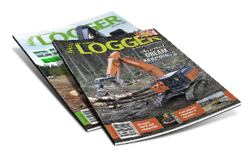In mid-1984, Ross Lockyer was offered a consultancy with the Asian Development Bank (ADB) as Logging Engineering Consultant for the Project Completion Mission pertaining to the ADB Burma Forestry I Loan Project. His job was to travel around all the areas that were covered under the Project and observe, investigate, assess, evaluate, and report on the situation as he saw it at that time. With elephants for skidders and buffaloes for loaders, he got more than he bargained for. An extract from his book, But That’s What Elephants Are For! follows.
The Burma Forestry I LOAN Project (identified as ADB 1) covered the entire Sagaing Division of the Burmese Timber Corporation (BTC) which was in effect, the Burma Forestry Department. The Sagaing Division was the largest division in the country in terms of forest resources and timber production and was located in the Central North-East of Burma (now known as Myanmar).
The BTC Sagaing Division employed, at that time, around 8,000 full-time employees (about 25 percent of BTC’s total staff), plus some hundreds of contractors.
Part of my job was to locate and inspect log-harvesting equipment, which had been financed by the First ADB Burma Forestry Project. The equipment included logging trucks, log loaders, log skidders and chainsaws, and also road construction equipment, such as bulldozers, road rollers, water trucks, fuel bowser tankers, and maintenance and repair workshops. I was also charged with inspecting and reporting on the log storage and rafting operations, logging and roading operations, sawmills, and the traditional Burmese log-extraction “equipment” comprising of elephants, water buffaloes, and oxen.
The teak forests of Burma at this time, were in effect, the only genuinely sustainably harvested indigenous forests in the world. This was all thanks to a Dr Dietrich Brandis, later to become Sir Dietrich Brandis, who had been employed by the British government in India to develop a sustainable harvesting plan for the indigenous teak forests of Pegu Province in Burma. Pegu Province had been annexed to the British Indian Empire in December 1852. Dr Brandis spent many years in Burma, wrote numerous reports and papers, and in 1896 he published a paper called The Burma Teak Forests, which described his plan for sustainably managing the harvesting of teak.
Notwithstanding the fact that Burma became the original hermit kingdom from 1948, after it gained independence from the British and cut itself off from the rest of the world, the Dietrich Brandis “Bible” on sustainable teak management was still the be-all and end-all (in fact, the only) reference manual for the management of the Burmese teak forests in use when I arrived in Burma in 1984.
The king of hardwoods
I initially visited eight separate elephant camps and logging operations, some of which were extracting mixed hardwoods, and others that were logging only teak. Teak is classed as the king of hardwoods. It is harvested, treated and sold quite differently to all other hardwoods and sells at many times the value of all other commercial species. Therefore, “teak”...





